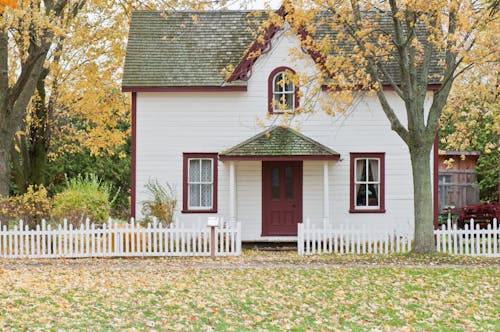The Challenge of Affordability
The dream of homeownership is increasingly out of reach for many, with rising housing costs, stagnant wages, and an imbalance between supply and demand pushing prices higher in cities around the world. While the idea of owning a home once represented financial security and stability, it now symbolizes a growing divide in society—where only a select few can afford to buy.
This gap is not just a product of temporary economic shifts but is instead driven by long-term structural changes in both the housing market and the broader economy. Understanding the reasons behind this trend requires delving into the factors that have fueled the skyrocketing prices and the challenges that prevent many from entering the housing market.

The Supply and Demand Imbalance
One of the most obvious factors contributing to housing unaffordability is the imbalance between supply and demand. Over the past few decades, housing supply in many regions has not kept pace with population growth, urbanization, or the increased demand for homes. In densely populated cities and major metropolitan areas, the demand for housing often exceeds the available supply, which naturally drives up prices.
There are several reasons why supply has failed to meet demand. In many cities, the availability of land for new development is limited. Zoning laws, strict regulations, and community opposition to new construction projects have all contributed to a slow rate of new housing development. Additionally, the cost of construction has risen due to higher prices for labor and materials, making it increasingly difficult for developers to build homes that are affordable for the average person.
This shortage of available housing is particularly evident in the affordable housing market. While high-end developments and luxury apartments continue to be built, there is a significant gap in the availability of affordable homes for middle-class and low-income buyers. This has created a scenario where housing prices continue to rise, leaving many buyers priced out of the market.
Rising Home Prices and Interest Rates
The combination of limited housing supply and high demand has led to a significant increase in home prices over the last several years. In some regions, home prices have increased by double-digit percentages annually, making it more difficult for potential buyers to save enough for a down payment. This sharp rise in prices has led to a situation where many individuals and families find themselves unable to afford homes that were once within their financial reach.
Interest rates, which are typically a significant factor in the affordability of housing, have also played a crucial role in exacerbating the issue. When interest rates are low, borrowing costs are lower, allowing people to take on larger mortgages and potentially afford more expensive homes. However, as interest rates rise—often in response to inflationary pressures—monthly mortgage payments become more expensive, further limiting the ability of potential buyers to enter the market.
In many regions, the rising costs of homeownership, coupled with inflation and increasing interest rates, have resulted in monthly mortgage payments that are significantly higher than they were in the past, even for individuals who were able to secure a loan. This has forced many would-be homeowners to either extend the length of their mortgage or compromise on the size and quality of the homes they can afford.

Stagnant Wages and Income Inequality
Another critical factor contributing to housing unaffordability is the stagnation of wages. For the last several decades, wage growth has not kept pace with the rising costs of living, including housing. While the cost of goods, services, and housing continues to climb, many workers have seen little to no increase in their incomes. This growing disparity between wages and housing costs has made it increasingly difficult for many people to save for a down payment or afford monthly mortgage payments.
For those in lower-income brackets, the challenge is even more pronounced. Renters are particularly vulnerable to rising housing costs, as rental prices have soared in many cities, making it nearly impossible to save for a down payment on a home. This creates a cycle of financial strain, where individuals spend a significant portion of their income on housing and are unable to accumulate wealth or savings to invest in property.
Additionally, the rise of income inequality has made the housing market more accessible to the wealthiest individuals and investors, while those on the lower rungs of the economic ladder struggle to keep up. As wealthy buyers purchase multiple properties, often with cash, the availability of affordable housing for the average person becomes even more limited.
Investor Influence and Speculation
Over the past few years, institutional investors and real estate companies have become increasingly active in the housing market. These investors purchase properties—often in bulk—and either flip them for a profit or turn them into rental units. While this has created significant wealth for investors, it has had the unfortunate side effect of driving up home prices, making it even more difficult for first-time buyers to enter the market.
In some cases, these investors are buying properties in areas where prices have traditionally been more affordable. They then either renovate the homes and sell them at a higher price or rent them out, further limiting the availability of homes for local residents. In cities where housing prices are already high, this type of speculation can price out lower-income individuals and families, perpetuating the cycle of unaffordability.
The increasing role of investors in the housing market has led to concerns that real estate speculation is driving up prices beyond what is sustainable. In some cases, these investors are contributing to a housing bubble, where prices rise far beyond the point of affordability, ultimately creating a market that is unstable and prone to sudden corrections.
Government Policies and Regulations
Government policies play a crucial role in shaping the housing market, and in many cases, policies have inadvertently contributed to housing unaffordability. Zoning laws, for example, often restrict the development of affordable housing in certain areas, limiting the supply of homes that could be available to lower-income buyers. In addition, many cities and regions have seen the implementation of rent control measures or building regulations that make it more expensive to develop or maintain housing.
At the same time, government programs aimed at making housing more affordable, such as subsidies for first-time buyers or low-income renters, have often been limited in scope or insufficient to address the underlying issues of supply and demand. While these programs can provide short-term relief, they often fail to address the root causes of the housing crisis, such as the lack of affordable housing stock and the rising costs of construction.
The Path Forward

Addressing the housing affordability crisis requires a multi-faceted approach that focuses on increasing the supply of affordable housing, addressing income inequality, and creating policies that support long-term, sustainable growth in the housing market. Solutions may include increasing investment in affordable housing construction, reforming zoning laws to make it easier to build in high-demand areas, and implementing policies that promote income growth and reduce inequality.
However, finding solutions will require collaboration between government, the private sector, and communities. The housing crisis is not just an economic issue; it is also a social one. Affordable housing is essential for ensuring that individuals and families can live in safe, stable environments, where they can build wealth, raise children, and contribute to their communities.
In the end, housing affordability is about more than just market dynamics; it is about creating a society where everyone has the opportunity to thrive. Only by addressing the root causes of the housing crisis can we hope to build a more equitable and sustainable future for all.





